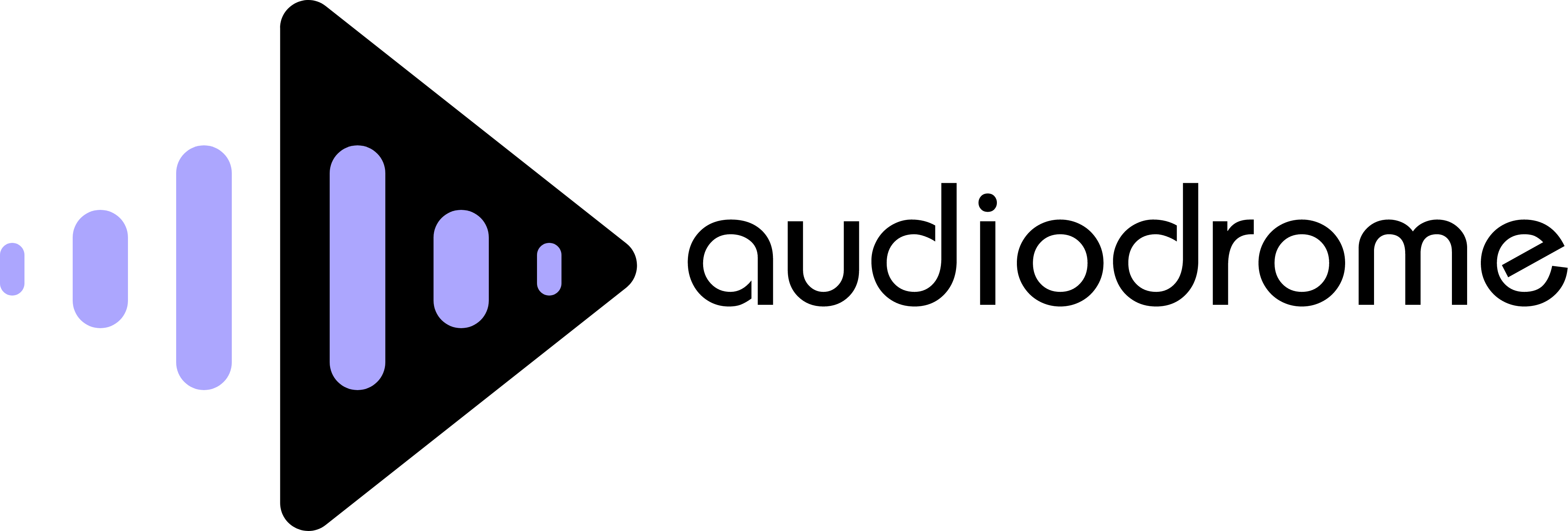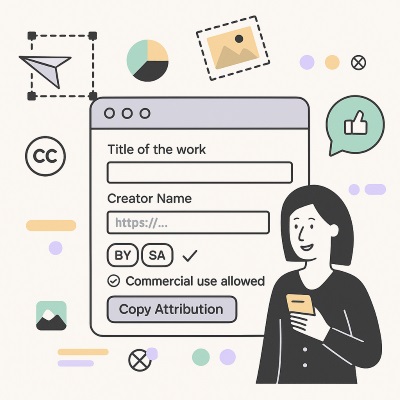How to Play Music on Podcast Legally: Podcast Music Source Selector (free tool)
Audiodrome is a royalty-free music platform designed specifically for content creators who need affordable, high-quality background music for videos, podcasts, social media, and commercial projects. Unlike subscription-only services, Audiodrome offers both free tracks and simple one-time licensing with full commercial rights, including DMCA-safe use on YouTube, Instagram, and TikTok. All music is original, professionally produced, and PRO-free, ensuring zero copyright claims. It’s ideal for YouTubers, freelancers, marketers, and anyone looking for budget-friendly audio that’s safe to monetize.
If you worry that one song could mute your whole show, you are not alone. This guide walks through how to play music on a podcast legally, then turns your answers into a clear source recommendation so your episodes stay online and revenue-ready.
Podcast Source Selector
In ~60 seconds, get the safest music source path for your situation. Educational, not legal advice.
Includes sponsors, ads, affiliates, paid memberships, or brand PR goals.
Edits can invalidate some licenses (e.g., NoDerivatives).
Educational guidance, not legal advice. Always check actual license terms.
Recommendation
Embed This Tool on Your Website

Podcast music rules in plain language
Most of the music you hear and want to use in a podcast belongs to someone. Unless you wrote it, recorded it, and kept all the rights, you usually need clear permission or a proper license before you add it to your show. That covers intros, outros, background beds, segment stings, and even quick musical jokes.

For commercial releases like hits and older catalog songs, you deal first with the rights in the song itself. This covers the melody, chords, and lyrics that the songwriter and publisher control, not any specific recording. To pair that song with your spoken content in a podcast, you often need a synchronization style license or similar written approval.

Next come the rights in the sound recording, often called the master. This means the exact recorded version you want to use, owned by a label, an indie artist, or even you if you self-released. You need their permission to drop that specific recording into your intro, transition, or background loop.

On top of that, your podcast activity can trigger mechanical and public performance rights. These relate to digital downloads, streams, and plays on different platforms, and they matter more as you grow and spread to new apps. When you push your show to multiple services or add paid tiers, extra licenses and collecting societies can enter the picture.
Two common myths
Many podcasters still believe they can safely use a few seconds of a song under fair use. In reality, rights holders and platforms often act against short unlicensed snippets, especially on larger shows or when money is involved. There is no magic three or ten-second rule that automatically makes a use legal in every situation.

Another common myth says that if a popular podcast uses a song, you may copy that choice. That show might have a private deal, blanket licenses through a network, or simply a higher risk tolerance than you. Their audio branding does not extend their rights to your feed, your platforms, or your sponsors.

The safest mindset treats every piece of music in your show as something that needs either full ownership, a clear license, or direct permission. When that is not possible or feels too complex, you can move to music sources built for podcasts and business use. That shift keeps your episodes playable, your back catalog safe, and your revenue options open.
Safe ways to play music on your podcast
When you ask how to play music on a podcast legally, you are really asking where you can get music that comes with the right permissions for the way you run and grow your show.
Creative Commons tracks (e.g., CC BY)
If you want more variety outside paid libraries, you can look at music that artists release under Creative Commons licenses. Some licenses allow commercial use if you give proper credit, while others block commercial use or edits altogether. You need to match your plan, like sponsorships, paid tiers, or heavy editing, to the exact license icons and wording on each track.

Public domain / CC0 music
You can also use music where the creator gives up rights through CC0 or where copyright on the composition has expired, and the work sits in the public domain. This can remove many licensing headaches for basic use in episodes and promos. You still need to check that the specific recording is also free to use, because a modern recording of an old piece can stay under copyright.

Direct licenses for popular songs
If you want a particular hit or a well-known song, you move into direct licensing. That usually means dealing with the owner of the sound recording and the owners of the song itself, often through labels, publishers, or specialist licensing companies. You need a written agreement that spells out the duration of your rights, the location of your show, the platforms you cover, and whether ads and paid extras are included.

Commissioned original music
Another safe route is to hire a composer or producer to create music just for your podcast. You agree in writing who owns the finished tracks, how you can use them, and whether you may reuse them in spin-off shows, trailers, or client work. This approach often suits brand-owned or network shows that want a unique sound and clear rights across all platforms from day one.

Royalty-free / production music libraries
One of the simplest options is a royalty-free or production music library that already thinks about podcasters and social media creators. These services let you license tracks by subscription or per track and then safely reuse them across episodes and platforms. You still need to follow their terms closely, including allowed platforms, attribution rules, and any limits on ads or client work.






How the Podcast Source Selector works
The Podcast Source Selector starts by asking a few simple questions about how you run your show. It checks whether the podcast is monetized or brand-owned, how heavily you plan to edit the music, and whether you will cross-post to YouTube or social platforms. It also looks at sponsor or ad presence, your ability to give attribution in audio and show notes, and whether you need no exclusivity, category exclusivity, or full exclusive use.

With that information, the tool lines up five practical source paths and weighs them side by side. It considers a royalty-free or stock library that works across podcasts and socials, Creative Commons tracks that allow attribution, and public domain or CC0 music, where you still respect the recording. It also includes direct licenses for commercial songs and fully commissioned original music that fits custom or work-for-hire setups.

Next, the tool filters out any sources that clearly clash with your reality, like Creative Commons options when you cannot give credit, or public domain and CC0 choices when you demand exclusivity. It scores what remains against your monetization plan, editing intensity, cross-posting, sponsor pressure, and exclusivity needs, then picks a primary path and often a backup with clear feasibility notes and a simple proof checklist. The goal is to move you from guesswork to a documented and defensible licensing choice that matches how you truly use music in your show.
Inputs explained (what each question actually changes)
Each question in the Podcast Source Selector nudges you toward safer music sources that match what you actually do with your show, instead of what you hope is allowed.
Is this a monetized or brand-owned podcast?
When your show has sponsors, ads, affiliate links, memberships, or clear PR goals, it behaves like commercial content. Licensors and libraries usually treat that very differently from a small hobby podcast with no money tied to it. They often set separate prices, rules, and scopes for commercial podcasts, even when the audience size is modest.
%201.jpg)
In the tool, choosing Yes pushes you toward royalty-free catalogs, direct licenses, or commissioned music instead of fragile options that only work in narrow cases. It raises the weight on provable rights and clean paperwork, because brands and platforms expect you to show that proof. You should only choose No if you truly run a non-monetized, non-brand project and expect it to stay that way.
Will you edit the music?
Licenses do not all treat edits in the same way, so your production style matters. Some deals clearly allow trimming, looping, and mixing music under your voice without extra steps. Others block adaptations and new versions completely, especially when the terms focus on keeping the original track untouched.
%202.jpg)
Inside the tool, saying you will not edit the music tells it that simple drop-in use is enough, which can keep options like some Creative Commons or public domain material viable. If you plan to trim, loop, or mix under voice, the tool leans toward royalty-free, direct, or commissioned paths that allow name editing as allowed. If you plan to remix and reshape the track, the selector treats that as a new work and strongly favors direct licenses and custom music.
Will you cross-post trailers or episodes to YouTube/socials?
Many podcast-focused licenses only cover audio feeds and podcast apps by default. Once you start cutting trailers for YouTube, Shorts, Reels, TikTok, or paid social campaigns, you move into wider sync and platform rights. That change often means different pricing, extra terms, or even a different type of license.
%203.jpg)
When you answer Yes in the tool, it rewards libraries that clearly allow use on social and video platforms, not just podcasts. It also boosts options like direct deals and commissioned tracks where you can bake podcast and social rights into a single agreement. If you try to combine narrow licenses with heavy cross-posting, the tool raises feasibility flags so you know that path often stays locked to one medium.
Will any sponsor/host-read ad run in or around this episode?
As soon as sponsor messages or host-read ads show up in or around the episode, rights holders often see your use as advertising. That can raise both the price and the level of attention on how you use the music. Some licensors even maintain separate rules for music that supports ads versus music that sits only under editorial content.
%204.jpg)
In the tool, a Yes answer shifts points toward sources that are easier to clear for advertising, such as royalty-free music with clear business rights, direct licenses, or commissioned tracks. It also adds notes around attribution for Creative Commons options and scope limits for stock libraries that cap ad use. That way you do not drop “podcast only” music into an episode that heavily promotes sponsors.
Can you give attribution in audio and show notes?
Certain Creative Commons licenses ask for visible and sometimes spoken credit for the creator. That usually means naming the artist and track in your show notes and sometimes in the audio itself. If your format, brand, or legal team will not let you do that, those licenses stop being a good match.
%205.jpg)
In the tool, saying Yes keeps CC BY style tracks as a serious option and lifts their score, because you can meet the credit rules. Saying No removes CC BY from your path and gently nudges you toward royalty-free catalogs, public domain, or CC0 material, direct licensing, or commissioned music instead. That shift keeps you honest about how your format actually works.
Do you need exclusivity?
Exclusivity changes the game because most royalty-free catalogs sell the same track to many customers. If you want music that only you or only your category can use, you move out of generic stock territory. In practice, that kind of control usually appears through custom commissions or specific direct deals.
%206.jpg)
Inside the tool, choosing no need for exclusivity keeps stock, Creative Commons, and public domain options strong. Asking for category-exclusive use nudges the selector toward direct licensing and especially commissioned music, where you can lock rights to your industry or niche. If you choose full exclusive rights, the tool heavily favors commissioned work and, to a lesser extent, tailored direct licenses, while it sharply lowers the score of stock-based paths.
Outputs explained
When you click “Get my safe source”, the pop-up shows a clear summary of what the tool thinks is safest for how you use music in your show.
Best source path (badge + score)
The Best source path line gives you a simple headline and a confidence score for the path that fits you best. It might read “Best source path: Royalty-free or stock library for podcast and socials” after you answer the questions. This score shows how closely that path matches your monetization, editing, cross-posting, sponsor plans, attribution, and exclusivity needs.
%201.jpg)
Why this fits
Right under the badge, you see plain language reasons that link directly to the answers you gave. The text explains how this source handles commercial use, how it behaves when you run sponsors, and how it copes with busy edit timelines. It also notes when the license can safely follow your show onto YouTube, socials, and future spin-offs.
%202.jpg)
Feasibility flags
Feasibility flags act like friendly “read the fine print” prompts so you slow down before you commit. They highlight gaps that often trip up podcasters, such as how rare true exclusivity is in big catalogs or how many so-called podcast licenses stop at RSS feeds. They also remind you to confirm that both the composition and the recording really qualify as public domain or CC0.
%203.jpg)
What to do next
The What to do next section turns the recommendation into simple actions you can take this week. It might tell you to choose a library that clearly lists podcasts, socials, and ads in the same license so you avoid guesswork later. For Creative Commons or direct deals, it nudges you to prepare attribution lines, contact labels or publishers, or firm up a written agreement before you ship episodes.
%204.jpg)
Proof to keep
Proof to keep shows you what to save so you can answer questions from platforms, networks, or rights holders later. The checklist adapts to your source path and can include license PDFs, invoices, URLs, dated screenshots of license pages, and key timecodes where music appears. For direct and commissioned music, it reminds you to keep signed agreements and any email threads that explain the scope of your rights.
%205.jpg)
Step-by-step: run a pre-flight before publishing
You can use the Podcast Source Selector as a pre-flight checklist for each new show or season.
Start by answering every question based on your real plan for the episode, not a safer version you wish you had. Set monetization, cross-posting, and editing answers to match how the show will actually ship, including future moves like YouTube uploads, clipped trailers, or planned sponsor additions.
Then read the full recommendation card from top to bottom instead of skimming the headline. Notice the Best source path, the feasibility flags that ask you to double-check details, and the What to do next section. If you see an Also consider path that looks safer, decide whether to move to that option now, before you lock in music choices.
Finally, build a small proof folder for each show or season and keep it up to date. Include license files or agreements, invoices or receipts, URLs, and screenshots of license terms, track IDs such as ISRCs or catalog numbers, and short notes on where you use each cue. When you document this from the start, you can respond quickly if a host platform, sponsor, or rights holder asks how you play music on your podcast legally.
Podcast Source Selector
Answer a few items and get a recommended music source path. Educational only, not legal advice.
Includes sponsors, ads, affiliates, paid memberships, or brand PR goals.
Edits can invalidate some licenses (e.g., NoDerivatives).
Your recommendation
Based on your podcast setup
Embed This Tool on Your Website

Practical podcast examples
Here are three common podcast setups that show how the tool guides you toward safer music choices in real life.
Hobby show, light music, no sponsors
A small conversational show wants a simple intro and outro bed, with the occasional transition sting to separate segments. There are no sponsors yet, but the host hopes to post clips to YouTube later and maybe grow into light monetization. In that case, the tool usually favors a royalty-free library that clearly allows podcast and social use.

If the host feels comfortable crediting artists and double-checking recordings, the tool may also point to CC BY or PD and CC0 options. The recommendation keeps the proof folder lean with only the essentials, such as the main license file, the invoice, track URLs, and a short note that lists which episodes use each piece of music.
Brand-owned series with ads and cross-posting
Now imagine a SaaS company that launches a branded interview series with a host who reads ads baked into every episode. The marketing team plans clip campaigns on YouTube and LinkedIn, along with re-edited snippets for paid social and landing pages. Here, the tool tends to lean toward royalty-free libraries with business-level terms, direct licenses, or commissioned music that clearly cover podcast, video, and ads together.

Feasibility notes remind the team to check supported platforms, ad permissions, and the exact term and territory written in each license. The proof folder becomes part of the show’s production kit and sits next to scripts and artwork. It holds license files, usage scopes, short rights summaries in plain language, and any written approvals from labels, libraries, or composers.
Storytelling show with heavy editing and exclusivity
A narrative show builds each episode like a film and layers music under voice, cuts stems, and reshapes themes across the season. The team cares a lot about a unique sonic identity so that competing shows in the same category cannot easily copy the sound. With Remix level edits and exclusivity checked, the tool leans strongly toward commissioned music and sometimes direct licenses that match the exact creative scope.

The recommendation also sets expectations about budget and time, since custom music and direct deals need more planning than stock tracks. Feasibility notes highlight the need for clear written agreements that define work-for-hire status, ownership of derivatives, and how strong the exclusivity actually is. The proof folder in this case holds contracts, cue sheets, and practical notes that help the team protect the show as it grows.
FAQs
These questions come straight from real podcasters who try to use music without getting muted or flagged.
Why did my video or podcast get muted for music?

If your video or podcast gets muted, you usually run into automated content ID systems that protect labels and publishers. They scan your audio for matches and act first, then let you dispute later. When you plan music up front and keep proof, you reduce surprise mutes and have stronger ground if you challenge a claim.
Can I legally use Pixabay music in my podcast?

Sites like Pixabay offer tracks under their own licenses, not a generic “free for everything” promise. You need to read the current terms and check that they allow podcast use, commercial projects, and cross-posting to platforms like YouTube. If the license fits and you follow it, you can use the tracks with more confidence.
Where can I find good intro music for my podcast?

For an intro, most podcasters either choose a royalty-free or production library, vetted Creative Commons tracks, or public domain and CC0 music. The key is not just how the track sounds but what the license actually lets you do. A short catchy theme that you can legally use everywhere beats a famous song that puts your feed at risk.
Why can radio use popular songs but podcasts cannot?
![Radio vs podcast copyright confusion] Reddit r/podcasting post questioning why radio shows can use popular songs for intros while podcasters face copyright liability for similar uses.](https://storage.googleapis.com/audiodrome/Tools/Podcast%20Music%20Source%20Selector/FAQ%204.jpg)
Traditional radio usually operates under blanket performance licenses that stations pay for in bulk. Those deals cover playing popular songs on air, but they do not cover on-demand downloads and permanent podcast feeds. Podcasts often need separate sync and master rights, so copying a radio-style intro with the same hit song can create legal trouble.
What should I watch out for with “copyright-free” music?

Most “copyright-free” or “no copyright” claims just mean the creator offers a specific license with certain conditions. You still need to confirm commercial use, check whether edits and remixes are allowed, and see if attribution is required in audio or show notes. You should also verify that the uploader actually owns the rights they promise to give you.
Where do you find free intro music?

You can find free options in public domain archives, CC0 collections, and some libraries that offer free tiers for creators. The catch is that you trade money for extra homework, because you must double-check every license and recording. If you want less risk and less research, a paid royalty-free library often gives a clearer path.
Should I hire someone to create my podcast music?

If you want a truly unique sound and clear rights for the long term, hiring a composer or producer can make sense. You agree in writing that you can use the music across episodes, promos, and future spin-offs. If your budget is tight, you can start with a solid royalty-free intro and plan to commission custom music once the show grows.
Make safe music part of your workflow
Podcast music will always involve some rules, but you do not need a law degree for every intro bed. Use the Podcast Music Source Selector before you publish, keep a small proof folder, and treat music choices like any other repeatable production step you control.

At Audiodrome, we create interactive tools designed to simplify music licensing and monetization. They help creators, agencies, and businesses avoid common mistakes, save time, and stay compliant while building content that earns fairly across platforms.
Each tool translates complex rules into clear, practical guidance. Our goal is to give you confidence before publishing, ensuring your projects are protected, professional, and ready to succeed in a fast-changing media landscape.














